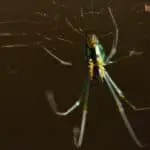Humanity has showcased its incredible creativity again, this time by beaming a video of a cat named Taters from the depths of space back to Earth. This achievement represents a significant leap in deep space communication technology.

On December 11th, NASA and the Jet Propulsion Laboratory (JPL) celebrated a major milestone in their Deep Space Optical Communications (DSOC) experiment: they successfully received a high-definition video of Taters chasing a laser pointer, transmitted from 19 million miles away – that’s roughly 31 million kilometers!
The experiment was conducted aboard NASA’s Psyche spacecraft, which blasted off on SpaceX’s Falcon Heavy rocket on October 13th this year. It’s currently on its way to a unique metal asteroid, 16 Psyche, nestled between Mars and Jupiter in the asteroid belt.
It might seem quirky to use a cute cat video to demonstrate this cutting-edge technology, but NASA’s leaders emphasize that this experiment lays vital groundwork for future deep space exploration. As NASA Deputy Director Pam Melroy put it, “Boosting bandwidth is key to our upcoming exploration and scientific endeavors, and we’re excited to see how this technology evolves and revolutionizes communication in future deep-space missions.”

The video of Taters was transmitted using a state-of-the-art flight laser transceiver developed by JPL. It sent the signal as a near-infrared laser beam to the Hale Telescope at the Palomar Observatory, operated by Caltech. This signal, racing at a speed of 267 megabits per second, took just 101 seconds to reach Earth. To put that in perspective, according to Speedtest.net, the average broadband speed in the U.S. hovers around 219 Mbps, and in the UK, it’s about 92 Mbps.
Ryan Rogalin, the lead scientist on the project’s receiving equipment, noted in a JPL announcement, “Even though the transmission covered tens of millions of kilometers, this tech can send videos faster than most broadband internet connections. In fact, when we got the video, we sent it over to JPL via the internet, and guess what? The internet was slower than our deep-space signal!”
The flight laser transceiver had its first “dawn” test in November, beaming a signal from 10 million miles away – roughly 16 million kilometers. Up until now, the device mostly sent random data in its tests. However, JPL scientists decided to inject some fun into this landmark demonstration.
As for the Psyche spacecraft, it’s on track for a Mars flyby in 2026, during which it’ll snap a few pictures of Mars. After that, it’s off to its primary destination – 16 Psyche, with an expected arrival in 2029.
This cat video, traveling billions of kilometers across the cosmos, not only delivers a dose of joy to Earth but also heralds a new era in optical communication for deep space exploration.








